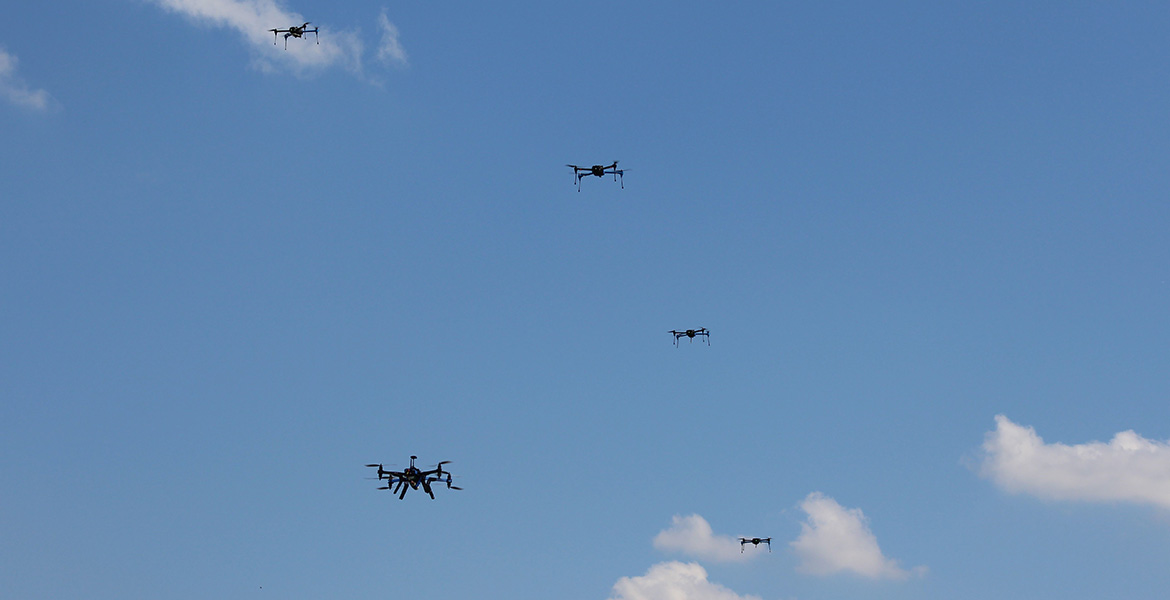
OSU's USRI receives first FAA authorization to fly unmanned aircraft in swarms
Wednesday, March 20, 2019
Oklahoma State University’s Unmanned Systems Research Institute is the first in the country to receive approval from the FAA to fly an unmanned fixed-wing aircraft swarm within national airspace. Current FAA regulations require one pilot and one set of controls for every unmanned aircraft. This flight authorization will permit a single pilot — along with visual observers for safety — to operate a swarm of up to 20 fixed-wing unmanned aircraft.
Jamey Jacob, professor of mechanical and aerospace engineering and director of the Unmanned Systems Research Institute at OSU, said research started four years ago to prove that flying a swarm of unmanned fixed-wing aircraft was possible.
“One of the things we do really well at OSU is fixed-wing unmanned aircraft. They’re much more difficult to control and operate than rotary-wing,” he said. “There’s a lot more computing power and algorithm development for a fixed-wing swarm to work. Using intelligent flight management and path planning systems, the aircraft communicate with each other in flight.”

The unique configuration developed by OSU researchers creates a “swarm of swarms” where groups of unmanned aircraft fly within smaller flocks as part of a larger swarm, communicating with a local group leader which then coordinates flights with the overall swarm formation. The research could benefit many areas including environmental and infrastructure monitoring, agriculture, package delivery, national security, airspace operations and weather research.
Jacob said unmanned aircraft swarms could gather information about thunderstorms that isn’t currently available. Aircraft flying in formation could gather data about temperature, pressure and humidity — information that doesn’t show up on radar. A swarm of unmanned aircraft could also map a wildfire, providing a comprehensive picture of its movement and intensity. Using a swarm could also save money. A group of aircraft measuring gas levels around an industrial plant, for example, could complete a job in hours that would take a single pilot and aircraft days.
“Swarms are the future of autonomous flight,” Jacob said. “This unique, first-of-its-kind approval just takes us one step closer to demonstrating for the first time the safe and efficient autonomous flight that will be common place in years to come.”
“It is incredible to be a part of such groundbreaking research as OSU paves the way ahead for expanded autonomous operations,” said Gary Ambrose, research development manager and adjunct professor of mechanical and aerospace engineering at OSU. “This step opens the door for many of our research partners and sponsors as we expand their UAS operability and capability.”
PHOTOS: https://flic.kr/s/aHsmaYAdcn
Story by: Kristi Wheeler
